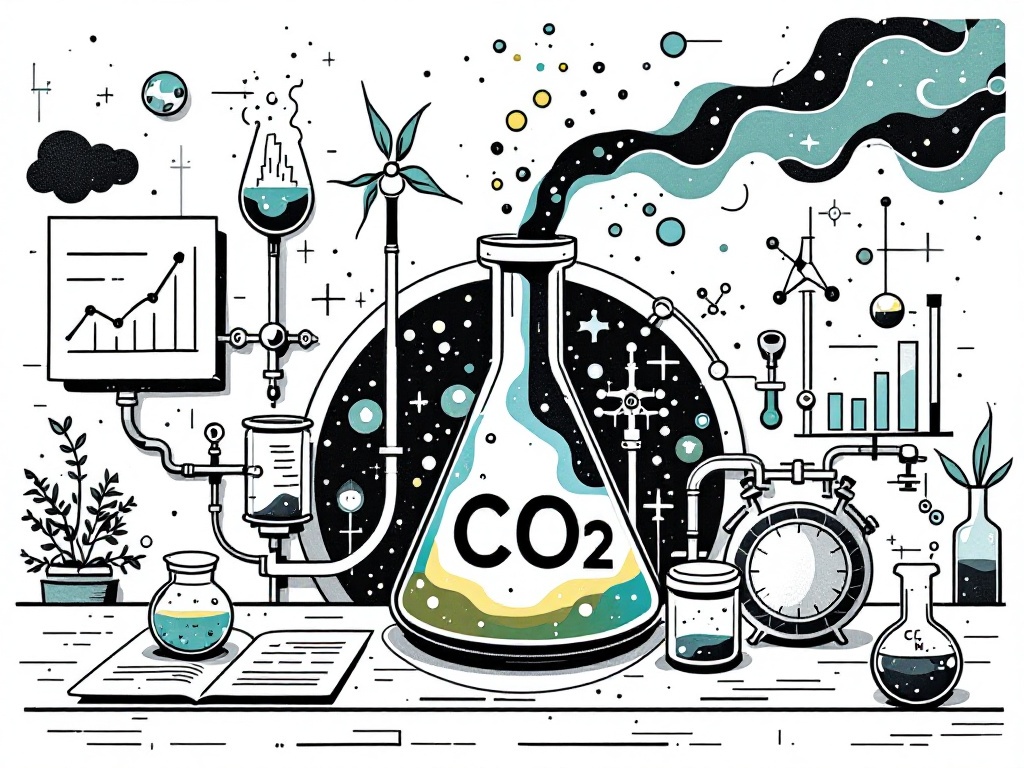Breakthrough: Converting CO2 to Methane Could Revolutionize Green Energy Storage

Global, Wednesday, 20 November 2024.
Ohio State University researchers have developed a groundbreaking method to transform captured carbon dioxide into methane fuel using renewable electricity. This innovative process employs a nickel-based catalyst to directly convert carbamate into methane, potentially creating a closed carbon cycle. By utilizing renewable energy sources, this method could significantly reduce energy consumption while addressing both carbon emissions and energy storage challenges.
A New Era for Carbon Capture
The conversion of carbon dioxide (CO2) into methane represents a pivotal shift in sustainable energy practices. Traditionally, CO2 is seen as a significant greenhouse gas, contributing heavily to climate change when emitted from power plants, factories, and vehicles. The innovative approach developed by chemists at Ohio State University offers a dual benefit: mitigating climate impact and generating a high-energy fuel source. This process not only addresses the pressing need to reduce atmospheric CO2 levels but also provides a valuable energy resource in the form of methane, which can be used for diverse energy applications[1].
Harnessing Renewable Electricity
The core of this new method is the use of renewable electricity to power the conversion process. By employing a nickel-based catalyst, researchers have efficiently turned captured carbamate—a form of CO2—into methane. This advancement underscores the potential to utilize excess renewable energy, particularly during periods of high solar or wind power generation, effectively storing this energy in methane form for later use. The conversion process is a promising step towards a sustainable, closed carbon cycle where methane is burned for energy, releasing CO2 that can be recaptured and converted back into methane[1].
Implications for Global Methane Management
The development aligns with global initiatives like the Global Methane Pledge, which aims to reduce methane emissions significantly to curb climate warming. Methane, while a potent greenhouse gas in its own right, can be managed more effectively when its lifecycle is controlled and utilized for energy. By converting CO2 into methane, not only do we address CO2 emissions, but we also create a framework for reducing the impact of methane through controlled combustion and recapture[2]. The pledge, supported by numerous countries, emphasizes the importance of technological innovations in achieving emissions reduction targets[2].
Challenges and Future Prospects
Despite its promise, the conversion of CO2 to methane using renewable electricity presents challenges, primarily regarding the scalability and economic feasibility of the process. The energy balance and lifecycle assessments are crucial to ensure that the process remains beneficial from an environmental standpoint. Furthermore, the integration of such technologies into existing energy infrastructures will require significant investment and policy support. However, the potential benefits, including reduced reliance on fossil fuels and enhanced energy security, make this a compelling area for continued research and development[1].
A Path Forward
The Ohio State University’s breakthrough in converting CO2 to methane could set a precedent for future innovations in green energy. By focusing on low-energy conversion processes, as emphasized by lead researcher Tomaz Neves-Garcia, the team aims to enhance the efficiency of carbon capture and utilization technologies. This advancement could pave the way for similar approaches to convert captured CO2 into a variety of other valuable products, revolutionizing how we think about greenhouse gas management and energy production[1][3].